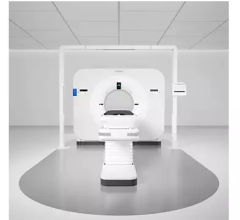This industry has watched a trend in medical technology grow from a small ripple a couple of years ago into a potential tidal wave in 2014 due to growing concern over patient radiation dose levels from medical imaging. Use of radiation dose monitoring software came to the forefront when California, followed by Texas, created laws requiring medical facilities to record the amount of exposure patients receive from tests such as computed tomography (CT) and magnetic resonance imaging (MRI).
Adoption of this software will be further accelerated by new Joint Commission standards released in December 2013, which starting in mid-2014 require the use of radiation dose monitoring software as part of its accreditation.
The Joint Commission’s (TJC) view is that it is not possible for a medical facility to know exactly how it is doing in regards to patient radiation safety or use of “as low and reasonably achievable” (ALARA) dosing principles if it does not track the data. The software enables hospitals to build a more robust radiation safety program and re-evaluate its radiation safety practices. Empirical data from these systems offer justification for changing imaging protocols and revision of workflows in both radiology exams and interventional procedures.
In addition to requiring a method for collecting and storing patient dose data within the patient’s clinical record, TJC guidelines call for implementation of a powerful and dynamic radiation safety program with an engaged radiation safety committee and physicist who regulate radiation safety practices, annual performance evaluations of imaging equipment by a medical physicist, registration and certification of all radiology technologists, and updated protocols for all imaging procedures including pediatrics. There is a general feeling in radiology that it is only a matter of time before more states legislate the use of radiation dose monitoring software. There is also an expectation that dose level guidelines may eventually be set for all imaging protocols by the American College of Radiology (ACR), based on its national Dose Index Registry.
Is your facilty prepared for compliance? I suspect radiation dose monitoring will be the topic of much ongoing conversation in 2014, and its software will be among the highlights on expo floors at upcoming radiology and radiation oncology conferences. To help you get a handle on radiation dose management, Imaging Technology News has created a new comparison chart that looks at different vendors that offer software solutions. (See page 8.) In addition, to gain some insight on dose recording, see “Recording and Managing Radiation Dose” on page 7 of this issue.


 December 11, 2025
December 11, 2025 









